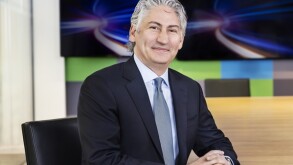
|

|
|
Giuliano Foglia |
Marco Emma |
With the so-called "Investment Compact" decree (Law Decree no. 3 of January 24 2015), the Italian Government introduced certain urgent measures to support the banking system and also to encourage investment. Article 5 of the decree amends the Patent Box to improve its attractiveness, keeping the overall structure of the beneficial regime recently adopted (see our Italy update in the December/January issue).
The most favourable adjustment is to the regime's scope of application: together with patents, formula, process and similar creations of the mind, the discounted tax rate may now apply to any kind of trademarks (including purely commercial ones), designs and models capable of legal protection.
Similarly to the original version of the regime, only taxpayers involved in qualifying research and development (R&D) activities may be admitted to the Patent Box regime. However, the decree now allows that such R&D activities may be also outsourced to any third (unrelated) party and not only to universities or similar research entities, as initially required.
The decree also confirmed that, as per the OECD's nexus approach, only part of the income deriving from intellectual property (IP) would be exempt, based on the ratio of (A) R&D expenses borne to maintain, increase and develop the intangible asset to (B) total expenses sustained for the creation of such IP right. For such purposes, expenses sustained for R&D activities (i) directly carried out by the taxpayers or (ii) outsourced to third (unrelated) parties are fully qualified for the regime. In addition, pursuant to the new decree, expenses (iii) borne for R&D activities outsourced to related entities (intra-group) and those (iv) sustained to acquire IP rights are now also taken into account, although up to the limit of 30% of the sum of the fully eligible R&D expenses under (i) and (ii) above. In other words, costs for IP acquisition and for R&D activities outsourced to related parties now also count for the nexus approach computation, but they would grant a full benefit only if resulting in 30% or less of the other "original" qualifying expenses under (i) and (ii).
Finally, in relation to the Patent Box regime the ruling procedure is no longer compulsory for intra-group transactions but is still necessary in relation to income stemming from direct use of IP rights.
The Investment Compact also includes tax measures to support access to alternative forms of "indirect" foreign financing. In particular, article 6 of the decree extended the scope of application of the exemption from Italian withholding tax to foreign institutional investors participating indirectly to banking financing transactions (that is, institutional investors providing funds to Italian lending banks). Only institutional investors established in "white-list" countries and subject to surveillance therein are able to take advantage of the exemption.
The measures enacted by the decree are in force as from January 25 2014. However, amendments could be passed during the process of conversion of the Decree into law by Parliament. If not converted before March 26, the decree must be deemed as retroactively non-effective.
Giuliano Foglia (foglia@virtax.it) and Marco Emma (emma@virtax.it)
Tremonti Vitali Romagnoli Piccardi e Associati
Tel: +39 06 3218022 (Rome) +39 02 58313707 (Milan)
Website: www.virtax.it









